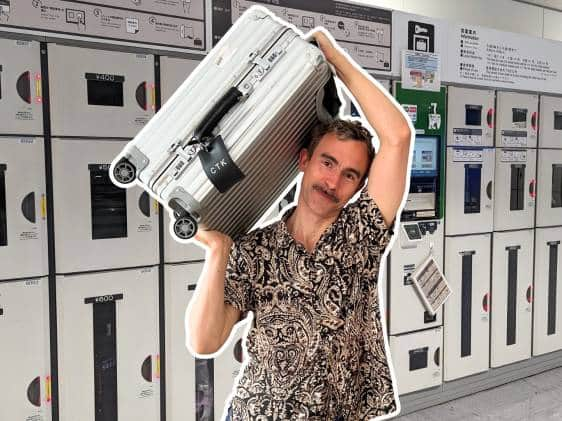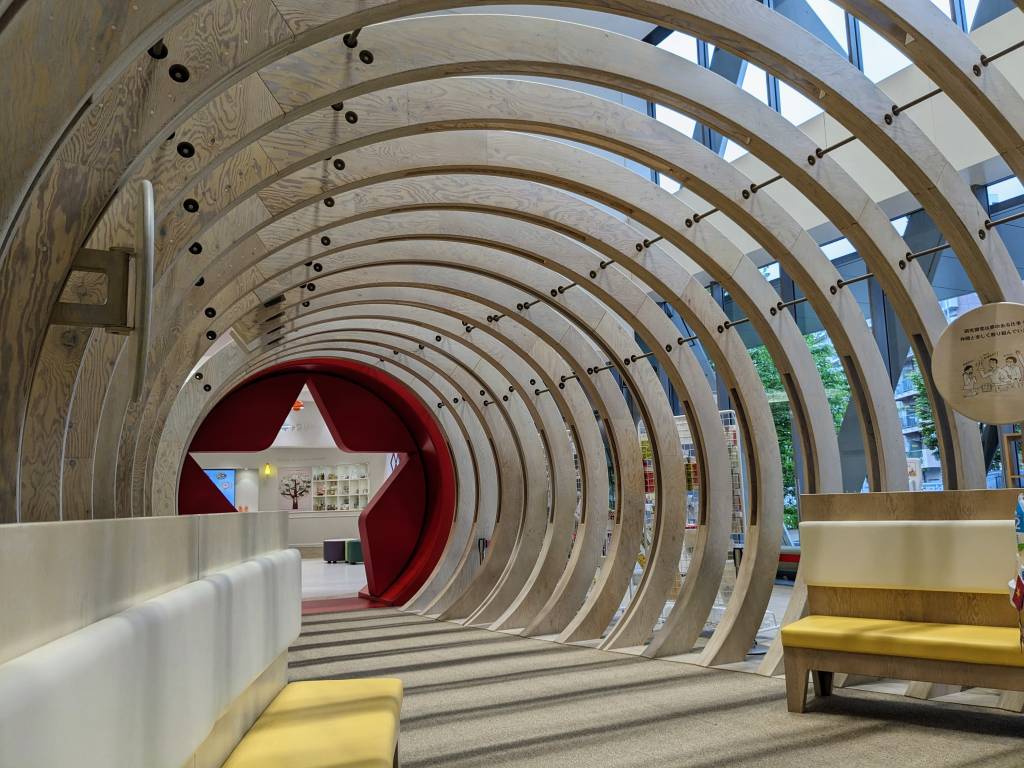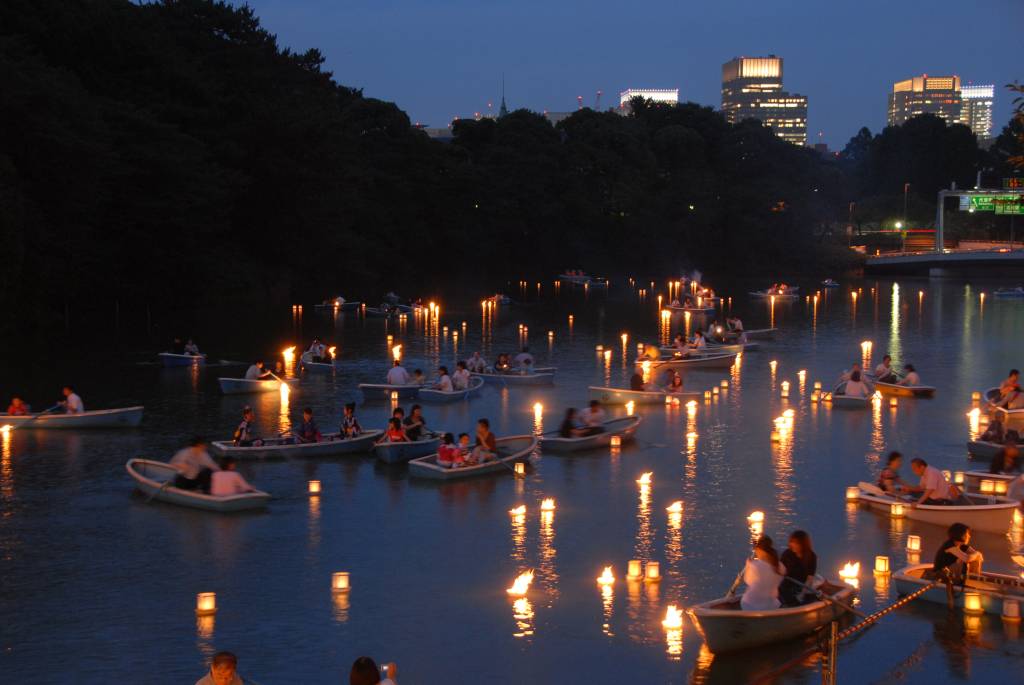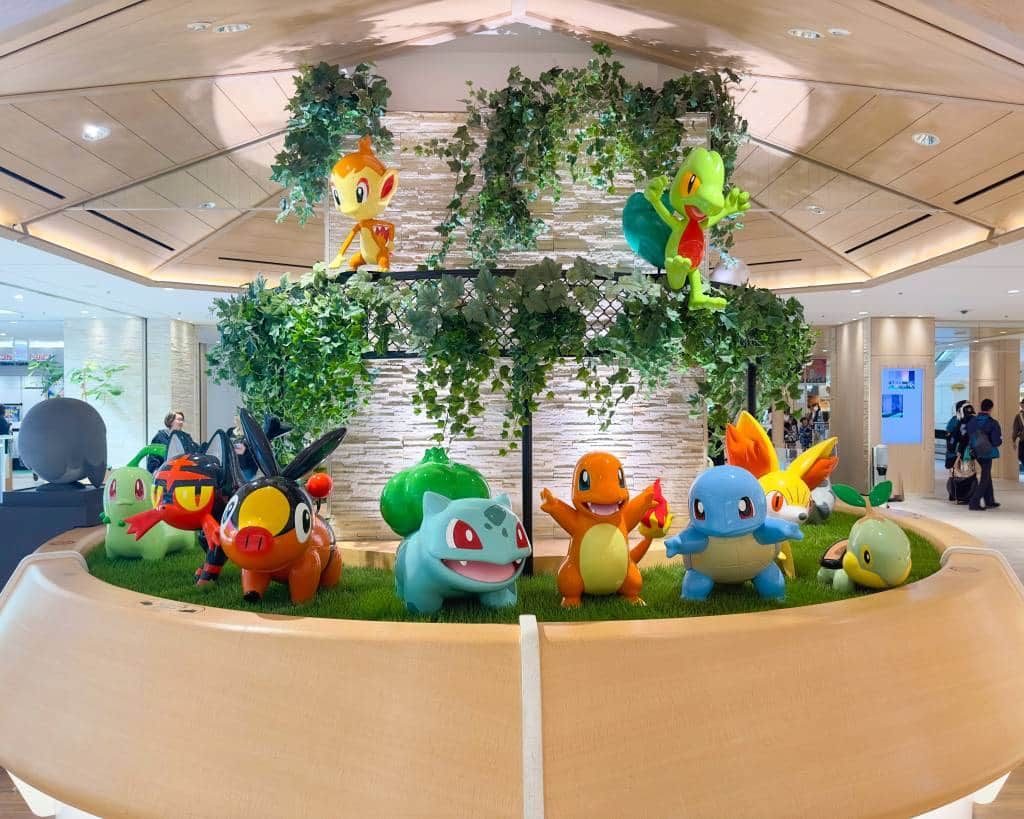Kawaguchiko has some of the best views of Mount Fuji — reflected across a lake, or foregrounded by fields of lavender — and there’s no shortage of things to do there, either. Here are tips for a day trip from Tokyo to Kawaguchiko.
The second biggest and most accessible of the Fuji Five Lakes, Kawaguchiko has a wealth of natural resources, with stunning autumn leaves, cherry blossoms, and flower festivals galore. With direct transport — a 2-hour bus or train ride — from Tokyo to Kawaguchiko, it’s an unsurprisingly popular spot, and well worth a day trip.

The need to escape city streets can be strong, and there is nowhere better to get in touch with nature, as well as tick off the biggest sight in Japan. If you are planning to size up the beast before you climb, there are buses to Fuji’s 5th Station available from Kawaguchiko too. With onsen, art museums, and seasonal delights, there are plenty of things to do throughout the year, so add Kawaguchiko to your bucket list!
Getting from Tokyo to Kawaguchiko
We’ve given a quick overview below but for more information, see our Tokyo to Mount Fuji transport guide.
| Transport | Comfort | Convenience | Price | Time | Booking Links |
|---|---|---|---|---|---|
| Bus | ★ ★ ★ ☆ ☆ | ★ ★ ★ ★ ☆ | ¥2,100 (one-way) | 2 hrs | Willer Express | Kosoku Bus |
| Express train | ★ ★ ★ ★ ☆ | ★ ★ ★ ★ ☆ | From ¥4,130 (one way) | Under 2 hrs | Book online |
| Regular trains | ★ ★ ☆ ☆ ☆ | ★ ☆ ☆ ☆ ☆ | ¥2,510 (one-way) | 2 hrs 45 min + transfer time | |
| Tour bus (full day trip) | ★ ★ ★ ☆ ☆ | ★ ★ ★ ★ ☆ | ¥8,500 (return) | 2hrs | Book here |
| Private driver (full day trip) | ★ ★ ★ ★ ★ | ★ ★ ★ ★ ★ | ¥68,385 (return) | 1.5 hrs depending on traffic | Book here |
Taking the train to Kawaguchiko
From JR Shinjuku Station, you have three options. The fastest is the direct Limited Express Fuji Excursion service, which takes just under 2 hours and starts at ¥4,130. However, there are limited trips per day.
There are reserved and non-reserved seat options, and the country-wide JR Pass does cover part of the journey. Tickets sell out superfast, so it’s recommended you book at least 1 to 4 weeks in advance, either on Klook or Eki-net.
For a middle option on price and time, you can take a Limited Express Kaiji to Ōtsuki and then hop on the Fujikyū Railway to Kawaguchiko — this takes just over two hours and costs ¥3,530. If you want to save your cash, you can catch a local train (possibly changing at Takao, depending on the times) to Ōtsuki instead, which brings your travel time up to about 2.5 hours but costs ¥2,510.
Taking the bus to Kawaguchiko
To avoid the inevitable line at Kawaguchiko Station, you could catch a highway bus from stations across Tokyo, including Shinjuku, Shibuya, and Tokyo.
Tickets start around ¥2,100 and the ride takes about two hours, stopping at Fuji Q Highland on the way. You can book the return trip here.

Hiring a private driver from Tokyo to Mt. Fuji
If you’re happy to pay for convenience and flexibility, then this reasonably priced private driver service costs ¥68,385 for 4-7 people and is the smoothest way to enjoy the Mount Fuji area. Having a private driver pick you up from your hotel and not having to figure out schedules/queues for buses makes for a hassle-free day.
Tours from Tokyo to Kawaguchiko
If you can’t be bothered to delve into the intricacies of public transport, then it’s worth hopping on a day tour from Tokyo. This highly rated day trip on Viator includes the famous Chureito Pagoda Mount Fuji view, Lake Kawaguchiko, and a visit to a traditional thatched roof village. If you need more ideas, there’s a wide range of other Mount Fuji excursions on Viator.
Getting around Kawaguchiko

The easiest option to access most sights around Kawaguchiko is to make use of the sightseeing buses. There are three main bus lines: Red, Green, and Blue, all departing from Kawaguchiko Station. You can purchase a two-day ticket for ¥1,700. IC cards also work on trains and local buses. Another option is to rent a bicycle — there are a few stores dotted around the area.
Top things to do in Kawaguchiko
Since everything in Kawaguchiko comes with the bonus of Japan’s most famous mountain in the background, you can’t really go wrong, no matter what you explore. If you decide there’s too much to cram into a single day, then check out the options for spending a night in the shadow of Mount Fuji. There’s plenty to see in the area, but here is a selection of some of the top spots.
Mt. Fuji Panoramic Ropeway
Sightseeing Boat/Ropeway Entrance Stop (No. 9) via the Red Line BusGet tickets in advance

The ropeway gives fantastic views of both Mt. Fuji and Lake Kawaguchiko, reaching an altitude of 1075 meters (3527 ft) at its highest point. It runs up to Fujimidai Station on top of Mt. Tenjō within 3 minutes.
The observatory has grown in recent years and has plenty of photo spots and even some games to try out. The ropeway is the setting for a story written by one of Japan’s literary masters, Osamu Dazai, which describes raccoons and rabbits being placed on gondolas and around the observatory to welcome guests.
Pro tip: If you’re looking for more views of Fuji, we have some great alternative hikes with stunning vistas.
Oishi Park and Kawaguchiko Natural Living Center
Kawaguchiko Natural Living Center Stop (No. 20) via the Red Line Bus
To view Mt. Fuji from fields of lavender and blueberries is a pretty awesome experience and one you can get at the Kawaguchiko Natural Living Center and nearby Oishi Park. The lavender is in peak bloom in mid-June, which is also when the nearby herb festivals take place.
From July to mid-August, you can pick your own blueberries and other fruit at nearby farms. This can be organized by the center. But no matter when you go, the view will still be spectacular.
Itchiku Kubota Art Museum and The Maple Corridor
Itchiku Kubota Art Museum Stop (No. 17) via the Red Line Bus
The museum has numerous examples of work by Itchiku Kubota, a world-renowned specialist in the ancient art of fabric dyeing. This includes beautiful kimono, as well as a tearoom with stunning views across the lake of Mt. Fuji. There are gardens surrounding the museum, with mini waterfalls and forests.
The museum is close to the Maple Corridor, one of the best spots in the whole area for autumn leaves — it even has its own festival. The Momiji Tunnel is a little closer to the lake.
Pro tip: If you fancy more day trips for autumn leaves, see our guide to fall day trips from Tokyo for ideas.
High School students: ¥900
Middle School students: ¥400
Elementary School students: ¥400
Fuji-Q Highland Amuseument Park
Fuji-Q Highland Stop (No. 105) via the local route bus (included in bus pass) or train to Fujikyu Highland StationGet attraction passes here

A theme park so dedicated to breaking world records it builds a new rollercoaster every five years just to do so, Fuji-Q Highland is a great place if you want to be scared out of your wits.
There are multiple ways to achieve this, of course, from the terrifying drops and knee-buckling speeds of the rides to the horrifying haunted house. With views of Fuji-san as you rocket at speeds of up to 172km/hr, this is a different way to enjoy the greatest sight of Japan. A direct bus from Tokyo is also available.
Pro tip: If you’re keen on Fuji-Q, it’s worth considering a Mt. Fuji Pass — this covers your entrance, plus a bunch of other attractions and transport.
High School students: ¥6,400
Middle School students: ¥6,400
Elementary School students: ¥4,600
Seniors: ¥2,200
Kawaguchiko Music Forest Museum
Kawaguchiko Music Forest Museum Stop (No. 15) via the Red Line Bus.
A slightly strange attraction but popular nonetheless, the Music Forest Museum is dedicated to a mostly European collection of automatic musical instruments. The biggest attraction is the French fairground organ from 1905 that plays every 30 minutes.
There are European-style gardens with views of Mt. Fuji, as well as shops, a chapel, rose garden, and restaurant. The stylized design of the museum and gardens creates quite a surreal setting and it’s very pretty — reminiscent of a fairytale cottage.
High School students: ¥1,300
Elementary School students: ¥1,000
Eat hōtō noodles: the local specialty
Various spots on the Red Line Bus route, including at Kawaguchiko Station
While you’re in Yamanashi Prefecture, you’ll want to try the local noodles to complete your experience. These unusually flat noodles are cooked in a miso soup with vegetables to create a nourishing bowl of hearty goodness, similar to a stew. Despite looking like udon (albeit flatter), the noodles are prepared similarly to dumplings.
There are plenty of places to try the dish — just keep your eyes peeled as you pass restaurants. If you want to plan ahead, the restaurant chain Hōtō Fudō has restaurants around the lake and a great reputation for high-quality noodles.
Soak in the sights at a hot spring

There are two primary onsen towns on the Red Line Bus route: Funatsu-Hama and Azagawa, each with plenty of hotels and public onsen which welcome day guests into their relaxing baths. Hotel Mifujien has good views of Mt. Fuji, although it is not the fanciest of onsen. Entry costs ¥1,200.
Yurari has great views from the second-floor baths, with a range of bath types and entry from ¥1,200 to ¥1,700 depending on day and time — they also have private onsen bookable from ¥2,500 for one hour, with views of that mountain we keep mentioning. You can also try Yamanakako Hot Spa-Beni Fuji no Yu, which has good views and a nearby morning market to boot.
Things to do around Kawaguchiko
Chūreitō Pagoda
Train from Kawaguchiko Station to Shimoyoshida Station
No doubt you’ve seen this photo a thousand times in research for your Japan trip. It’s a photo that can’t be shared widely for fear that people will accuse you of mishandling AI. But you deserve to take it — I mean you did have to climb 400 steps to get there. This spot is so popular that they have recently built a large platform — no more elbowing people out the way — and there’s free Wi-Fi.
Note: If you board a limited express train to Shimoyoshida, it costs ¥400 extra on top of your regular ticket. Alternatively, if coming from Tokyo, you can hop off the train early and put your luggage in the station’s lockers.
Ice and Wind Cave
Narusawa Hyōketsu Ice Cave Stop (No. 80) via the Blue Line BusFugaku Fūketsu Wind Cave Stop (No. 51) via the Green Line and Blue Line Bus.

For an interesting geo-thermal phenomenon check out the Narusawa Hyōketsu Ice Cave and Fugaku Fūketsu Wind Cave. It takes around 30 minutes from Kawaguchiko Station to reach the caves, and they are both within a 10-minute walk away from each other.
The ice cave is the more interesting of the two and is cold all year round, with icicles sprouting from the ceiling. You’ll need to wear a helmet in both. They are also right next to Aokigahara Forest; you’ll get a glimpse when you walk from one cave to the other.
Children: ¥200
Saiko Iyashi-no-Sato Nenba Healing Village
Saiko Iyashi-no-Sato Nenba Stop (No. 48) via the Green Line Bus
Visit the Saiko Iyashi-no-Sato Nenba Healing Village with thatched buildings, each containing a local craft demonstration. You can wear samurai armor, dress as a geisha, buy some wind chimes, and chow down on local delicacies (wasabi ice-cream, anyone?).
Children: ¥250
High School students: ¥450
Elementary School students: ¥200
Fuji Moss Phlox Festival
40-minute shuttle bus from Kawaguchiko Station
Carpets of over 800,000 shibazakura cover the ground before Mount Fuji from mid-April to late May, creating stunning views with contrasting colors from flower to mountain to sky. There are good-value, all-in-one tour packages available during the festival period, but if you’re not keen on those you can easily access the site by shuttle bus from Kawaguchiko Station (approximately 40 minutes).
Oshino Hakkai
30-minute local bus from Kawaguchiko Station
Oshino Hakkai is known for its magical eight ponds, quaint windmills, and stunning views of Mount Fuji. In the past, devout individuals would cleanse themselves in these ponds before making their way up Mount Fuji. Nowadays only the Waku Pond holds great significance, with visitors encouraged to bottle up the water and drink.
While it can get quite busy during tourist season, heading there will treat you with a breathtaking vista, especially during the Diamond Fuji phenomenon.
Bonus sights
In case that wasn’t enough for you, there is plenty more to see dotted along the lake shore and in the main town of Kawaguchiko.
- The area is known for its museums, so if you fancy it, visit the Yamanashi Gem Museum, Kawaguchiko Museum of Art, and Kawaguchiko Konohana Museum.
- Head indoors and escape the heat or cold at Fuji-san World Heritage Center.
- For shrines, you could visit the Fuji Omuro Sengen Jinja Shrine on the south side of the lake, a few stops from Kawaguchiko Station.
- And for atmospheric fire-pit cooking (robatayaki), we recommend the restaurant Sanrokuen — only a 10-minute walk from Kawaguchiko Station.
- Explore the area around Kawaguchiko Station
Where to stay in Kawaguchiko
If you’ve just realized that 24 hours isn’t enough time to see everything in and around Kawaguchiko, then there are many fabulous places to stay over at — and some come with unforgettable views of Mount Fuji. See the top picks in our Mt. Fuji area accommodation guide.
Frequently asked questions
Is Kawaguchiko worth visiting?
Yes! Kawaguchiko is a great spot to visit and we highly recommend it. Not only will you get to see stunning views of Mt. Fuji, but you’ll also be spoilt for choice with all the different attractions in the area.
How long should I spend at Kawaguchiko?
It depends on what you want to do. If you’re happy to visit just a few attractions, then you can do it in a day trip from Tokyo. Otherwise, you could also make it a two- or three-day trip and see a lot more.
Which is better — Hakone or Kawaguchiko?
While Hakone is a fantastic destination, if your goal is to see Mt. Fuji, then Kawaguchiko is a better choice. Kawaguchiko has lots of different places you can see Mt. Fuji from; meanwhile, Hakone has fewer viewing spots.
While we do our best to ensure it’s correct, information is subject to change. Post first published in April 2017 and last updated in July 2025.
Get our Tokyo Cheapo Hacks direct to your inbox
-
 Tokyo’s Best Apartment-Style Hotels, by Area
Tokyo’s Best Apartment-Style Hotels, by Area -
 Highway to Hot Springs: Tokyo to Kusatsu Onsen by Bus
Highway to Hot Springs: Tokyo to Kusatsu Onsen by Bus -
 The Best Pocket Wi-Fi for Visiting Japan — Compared
The Best Pocket Wi-Fi for Visiting Japan — Compared -
 Go-Karting in Tokyo: Everything You Need To Know
Go-Karting in Tokyo: Everything You Need To Know -
 Morning Sumo Practice in Tokyo—Everything You Need To Know
Morning Sumo Practice in Tokyo—Everything You Need To Know -
 First-Time Harajuku Itinerary: Fashion, Street Food, and More
First-Time Harajuku Itinerary: Fashion, Street Food, and More
Recommended hotels located nearby
-
Ōme 54.3 km
-
Kamakura 73.8 km
-
Hakone 35.4 km
-
Kamakura 73.4 km




































